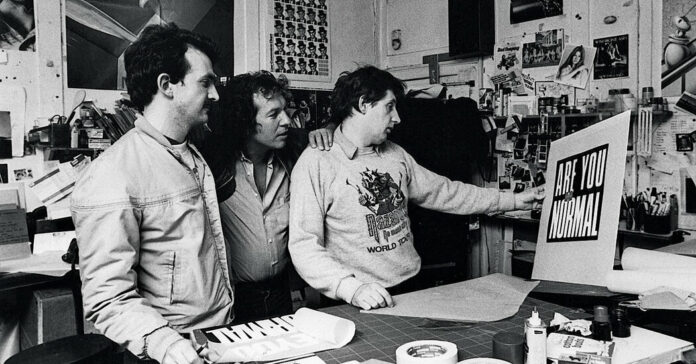It tended to be Thorgerson, by all accounts a stubborn genius, driving the record executives to apoplexy. “The greatest line about Storm was that ‘He’s a man who wouldn’t take yes for an answer,’” Mason said. “It was almost inevitable that whatever was done, particularly by the record company, would involve Storm having to shout at them.”
Thorgerson, who died in 2013, could be confrontational with the musicians as well. “He didn’t care if it was Paul McCartney or Roger Waters, he would express himself quite vehemently,” Powell said. “And often I would have to go around fighting the fires to maintain some kind of credibility. At the end of the day, it kind of worked because I managed to persuade the artists that it was the idea that was important. Forget about Storm’s personality.”
Corbijn said that, ultimately, the documentary was a “story of love and loss.” Hipgnosis came to an end at the dawn of a new era, in which music videos ruled and compact discs, with their significantly smaller artistic canvases, became the dominant mode of distribution. (Of course, today most people see album art in miniature on their phones.) Thorgerson and Powell, who were moving over to filmmaking, had a falling out over money and didn’t speak for 12 years after that. “It was like the end of a marriage,” Powell said. The two reunited after Thorgerson fell ill; he died of cancer at the age of 69.
In more recent years, Powell said, he’s been heartened to see that Hipgnosis’ album covers have broken “that barrier to be taken seriously as fine art.” He added, “A lot of thought went into those pictures. We didn’t take photographs of the band and slap it on the front with their names big and the title in big white letters. This was work that was taken extremely seriously. And I hope that comes over in the film.”
Powell pointed to Hipgnosis’ cover of Led Zeppelin’s final studio album, “In Through the Out Door” from 1979, which involved lovingly recreating an actual New Orleans juke joint in a studio in London. He indicated that making the album’s visuals (which, after all that work, came wrapped in a brown paper bag) likely cost more than it did for the band to record the music itself.
“You know,” Powell said with a laugh, “that sums up the period of time.”


